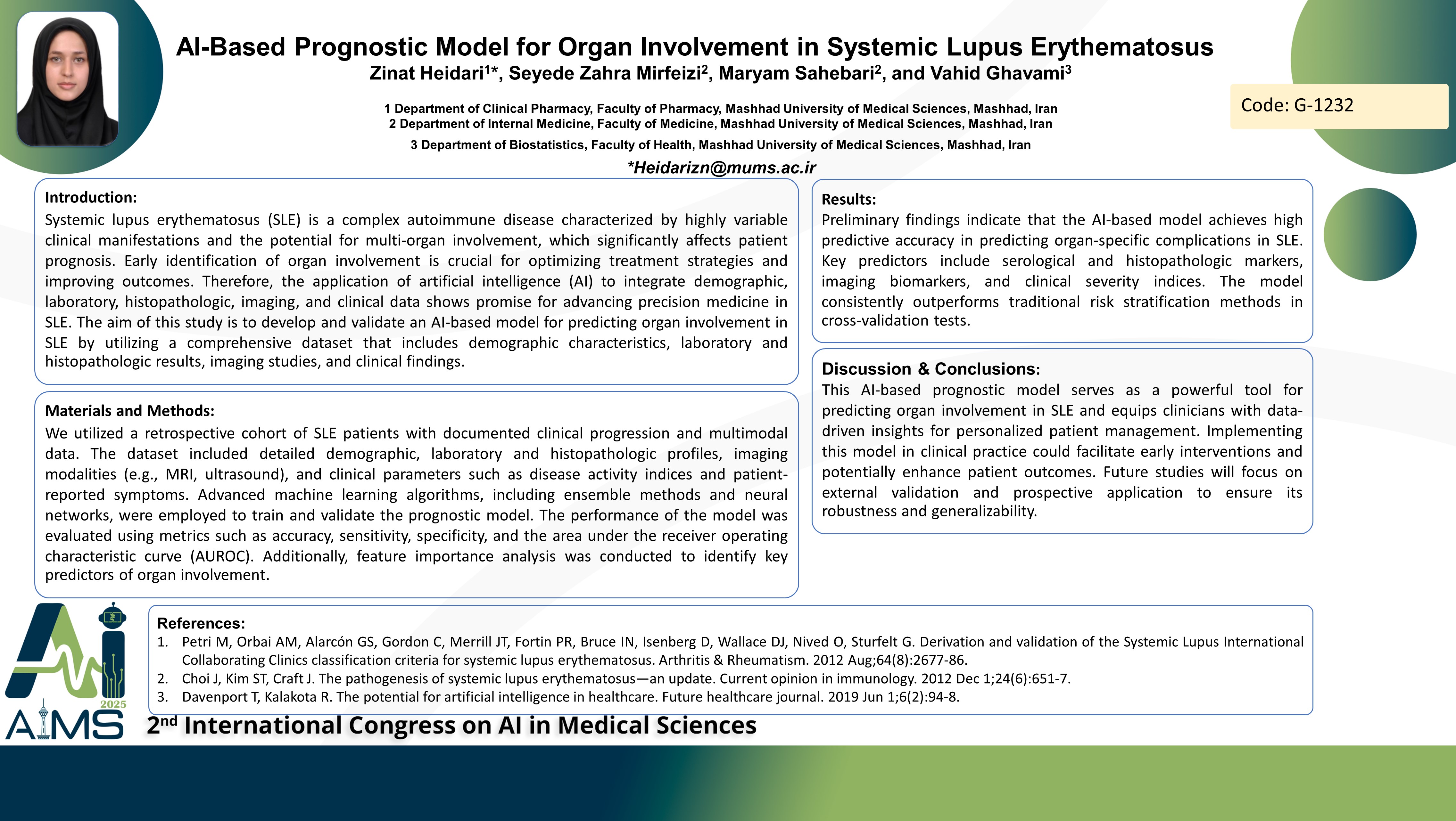طراحی مدل پیش آگهی مبتنی بر هوش مصنوعی برای درگیری اندام در لوپوس اریتماتوز سیستمیک
کد: G-1232
نویسندگان: Zinat Heidari * ℗, Maryam Sahebari , Seyedeh Zahra Mirfeizi, Vahid Ghavami
زمان بندی: زمان بندی نشده!
برچسب: پردازش سیگنال های پزشکی
دانلود: دانلود پوستر
خلاصه مقاله:
خلاصه مقاله
Background and aims: Systemic lupus erythematosus (SLE) is a complex autoimmune disease characterized by highly variable clinical manifestations and the potential for multi-organ involvement, which significantly affects patient prognosis. Early identification of organ involvement is crucial for optimizing treatment strategies and improving outcomes. Therefore, the application of artificial intelligence (AI) to integrate demographic, laboratory, histopathologic, imaging, and clinical data shows promise for advancing precision medicine in SLE. The aim of this study is to develop and validate an AI-based model for predicting organ involvement in SLE by utilizing a comprehensive dataset that includes demographic characteristics, laboratory and histopathologic results, imaging studies, and clinical findings. Method: We utilized a retrospective cohort of SLE patients with documented clinical progression and multimodal data. The dataset included detailed demographic, laboratory and histopathologic profiles, imaging modalities (e.g., MRI, ultrasound), and clinical parameters such as disease activity indices and patient-reported symptoms. Advanced machine learning algorithms, including ensemble methods and neural networks, were employed to train and validate the prognostic model. The performance of the model was evaluated using metrics such as accuracy, sensitivity, specificity, and the area under the receiver operating characteristic curve (AUROC). Additionally, feature importance analysis was conducted to identify key predictors of organ involvement. Results: Preliminary findings indicate that the AI-based model achieves high predictive accuracy in predicting organ-specific complications in SLE. Key predictors include serological and histopathologic markers, imaging biomarkers, and clinical severity indices. The model consistently outperforms traditional risk stratification methods in cross-validation tests. Conclusion: This AI-based prognostic model serves as a powerful tool for predicting organ involvement in SLE and equips clinicians with data-driven insights for personalized patient management. Implementing this model in clinical practice could facilitate early interventions and potentially enhance patient outcomes. Future studies will focus on external validation and prospective application to ensure its robustness and generalizability.
کلمات کلیدی
Artificial Intelligence, Rheumatology, SLE, Systemic Lupus
